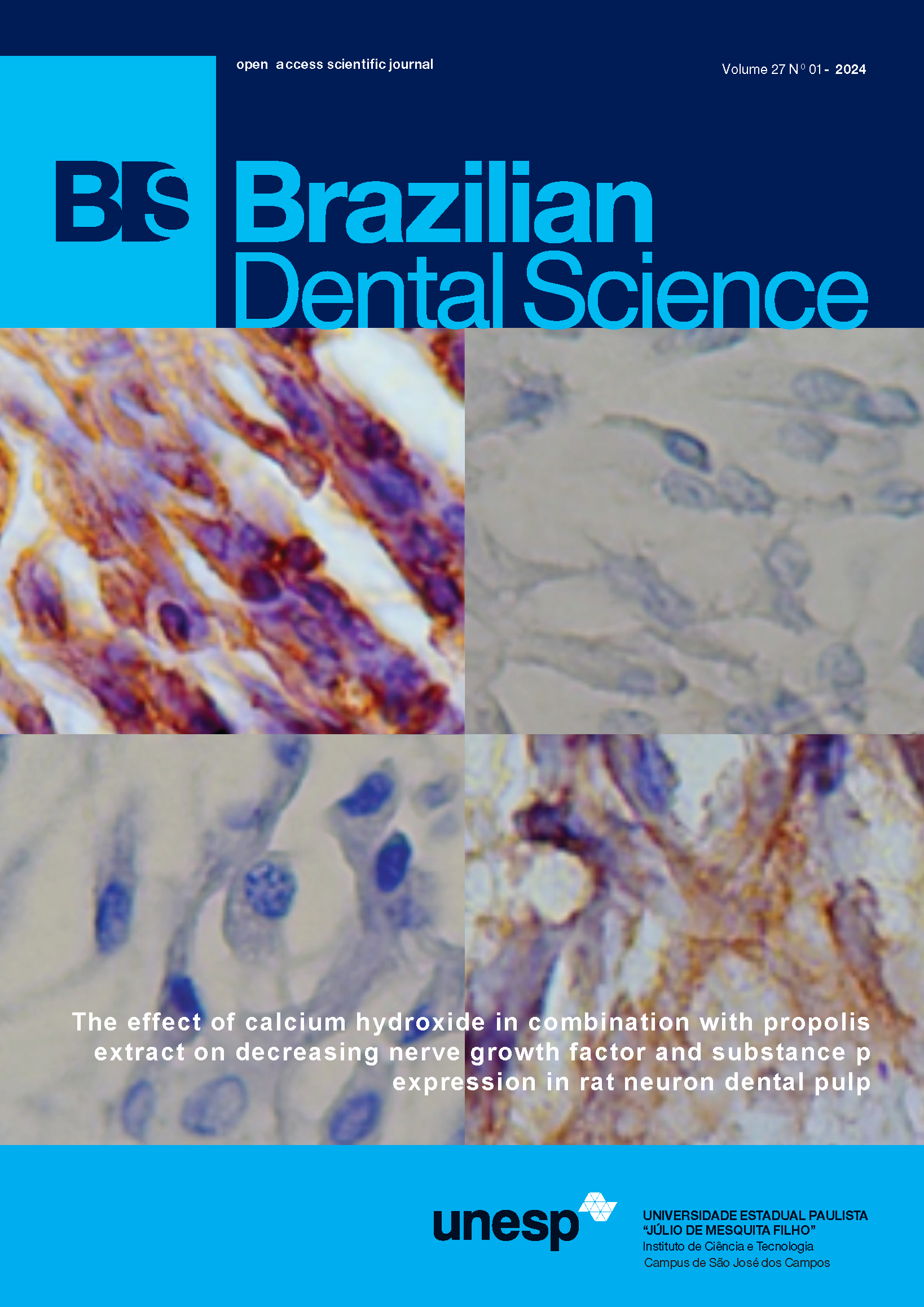Evaluation of removal torque values for titanium screws of prosthetic abutments after different torque application techniques: in vitro study
DOI:
https://doi.org/10.14295/bds.2016.v19i4.1295Abstract
Objective: To evaluate the removal torque values on abutment screws after different torque application techniques. Materials and methods: Thirty specimens of an external hexagon implant, a prefabricated abutment and a titanium screw were distributed randomly in three groups. In group 1, the screws received a torque of 30 N.cm; group 2 received a torque of 30N.cm and a second torque after 10 min, in accordance with the technique proposed by Brending et al. and Dixon et al.; in group 3, a torque of 30 N.cm was applied and maintained for 20 s, in accordance with the technique recommended by Sella et al. The specimens were attached to a universal testing machine and a digital key was coupled to the load cell in order to control the torque value at a velocity of 1 N.cm/s. Removal torque was performed 10 minutes after torque application. Values were statistically analysed using one-way ANOVA and Tukey’s HSD test (? = 0.05). Results: The mean and standard deviations (±SD) of removal torque values found were 27.95±0.99N.cm for group 1, 28.32±0.68N.cm for group 2 and 26.89±1.03N.cm for group 3. Groups 1 and 2 exhibited statistically higher values of torque than group 3 (p ? 0.05). Conclusion: The technique recommended by Breeding et al. and Dixon et al. seemed to be the best option when considering the removal torque values of external hexagon implants.
Keywords: Abutment screw; Dental implants; Removal torque.




